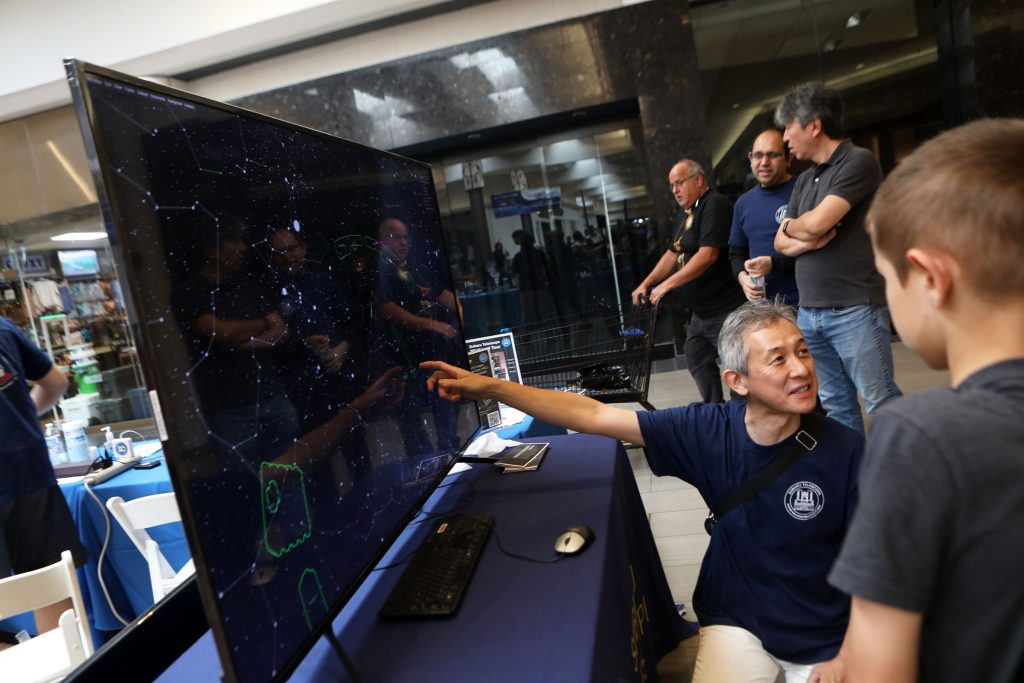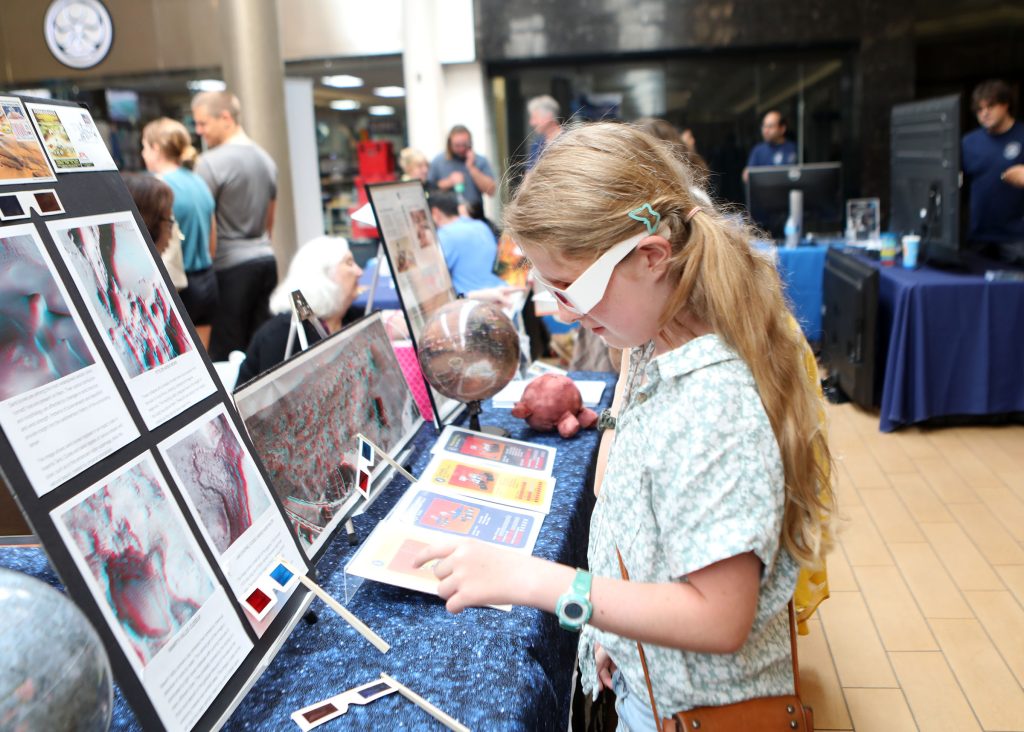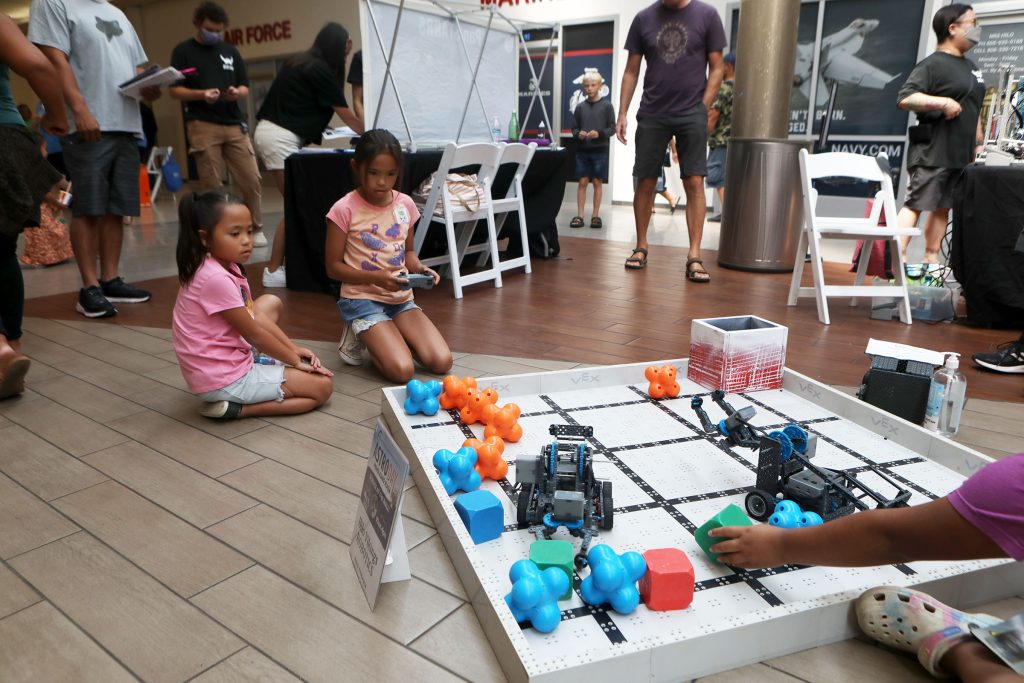On Saturday, learners of all ages can explore Hawaiʻi’s new contributions and discoveries in astronomy from working astronomers, engineers, researchers and educators during AstroDay at Kona Commons.
The event organized by the Maunakea Astronomy Outreach Committee will feature 20 institutions, including Maunakea Observatories, Maui observatories, and other local and national institutions. They will engage with the community through demonstrations and activities that will dive into the many aspects of astronomy.
Carolyn Kaichi, an education and outreach specialist for the University of Hawaiʻi Institute for Astronomy, has been organizing the annual AstroDay events in Hilo and Kona for about 10 years.
“I think that there is a need for connection between scientists, kids, families and the community in general,” Kaichi said. “A lot of times, there seems to be a misconception that science doesn’t apply to everyone, but people working in science are like anybody else living in the community. We just like to share our love, especially astronomy.”
During AstroDay in Hilo last year, representatives from Subaru Telescope brought a television that portrayed different information an astronomer could get from the telescope on Maunakea. The University of Hawaiʻi at Hilo brought a static electricity sphere for fun experiments. Hilo High Robotics brought robots for keiki to learn and use. And, the NASA Solar System Ambassadors brought maps, photographs and other tangible information from the Artemis mission.

Participants from Maunakea Observatories coming to Konaʻs event this year include the University of Hawaiʻi Institute for Astronomy, Subaru Telescope, W.M. Keck Observatory, Gemini Observatory, Canada-France-Hawaii Telescope, the Sublimeter Array project from the Smithsonian Astrophysical Observatory, Thirty-Meter Telescope International Observatory and the James Clerk Maxwell Telescope, which is operated by East Asian Observatory.
As an addition to the annual AstroDay event, the Institute for Astronomy will be bringing a solar telescope for the first time for anyone interested in safely viewing the surface of the sun.
Participating Maui observatories include Las Cumbres Observatory and the University of Hawaiʻi Institute for Astronomy Maui, which both operate on Haleakalā.

Other Hawaiʻi Island institutions and programs participating include the Maunakea Visitor Information Station, University of Hawaiʻi at Hilo Astrophysics Club, Project PANOPTES, Onizuka Space Science Program, NASA Solar System Ambassadors, National Weather Service, International Lunar Observatory Association, Thelma Parker Memorial and School Library, Hawaiʻi Keiki Museum and PISCES.
Although they were late registering, Hawaiian Volcano Observatory will be joining for the first time in a few years and the University of Hawaiʻi College of Engineering will also be represented as they share more information about the “Space Sciences Initiative.”
The Space Sciences Initiative is a collaboration between the College of Engineering, the University of Hawaiʻi at Hilo and the University of Hawaiʻi Institute for Astronomy and is the first step in establishing a space engineering and instrument development center for students in Hilo.
Construction of the high-tech center is still years away and tentatively scheduled to be completed by 2030, which is dependent on securing funding for the construction phase. However, the academic programming started this semester and will be offered as the center is developed.
“Prior to this initiative there was no direct avenue for local kids on the Big Island to major in engineering,” Kaichi said. “The College of Engineering will be at AstroDay to talk about new program, which will raise whole new generation of homegrown engineers who will, hopefully, stay and work here on their home island.”
In a 2019 report on astronomy in Hawaiʻi, the University of Hawaiʻi Economic Research Organization found that the industry supported the employment of 1,313 residents and that there are approximately 500 jobs at observatories on Maunakea and Haleakalā that are held by engineers and technicians who specialize in optics, software, data science, materials, mechanics, systems and cryogenics.

“There is a great need for engineers in the science community on Hawaiʻi Island and a big desire to hire more local engineers for specialized positions,” Kaichi said. “The initiative hopes to make an engineering career as easy and accessible to local students as possible.
“I think there is an engineer in all of us, all it takes is lighting the spark and growing the flame,” she continued.
AstroDay is free and will be outside the Kona Commons from 10 a.m. to 3 p.m. on Saturday. Free giveaways will be available while supplies last and there will be two drawings at 11:30 a.m. and 1:30 p.m. for four special grand prizes––two beginning-level telescopes and two NASA-themed skateboards.
This post was originally published on here







